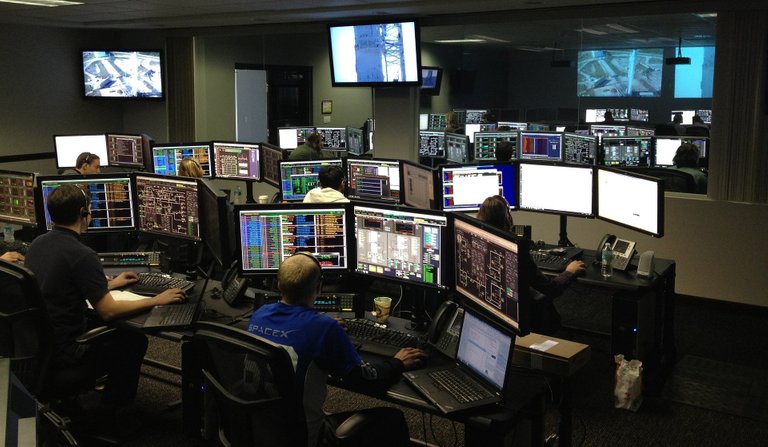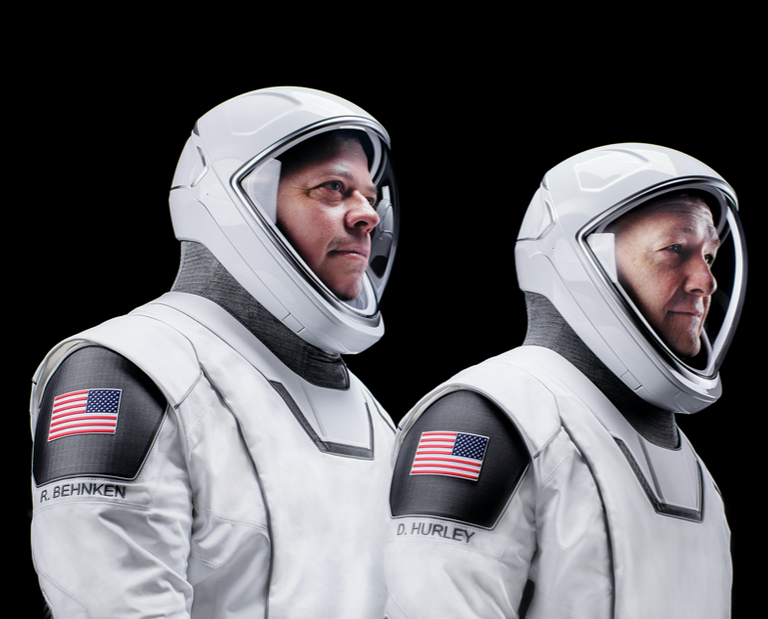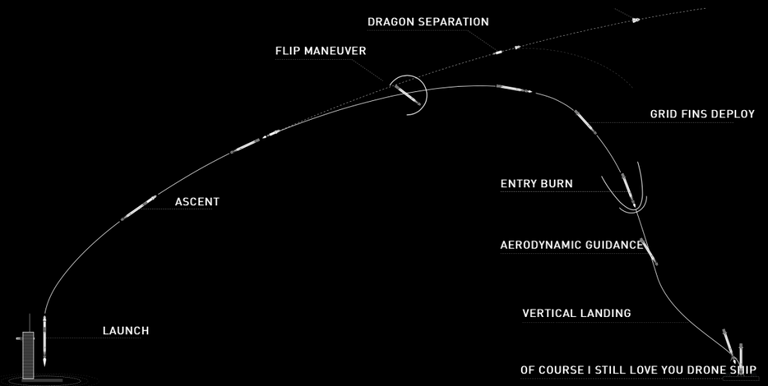
Text in English will follow
 Domani, 27 maggio 2020 la capsula Crew Dragon porterà due astronauti americani da Cape Canaveral alla Stazione Spaziale Internazionale, nove anni dopo l'ultimo volo dello Space Shuttle. Noi seguiremo in diretta l'evento attraverso due streaming alle ore 18 (CET, ora locale di Roma) e 22. Lo streaming si potrà seguire in diretta su https://personalaviation.eu/easa-club-live/ ma inseriremo anche un embed alla fine del testo in Italiano in questa pagina. Ciascuno dei due streaming avrà la durata di circa 60 minuti.
Domani, 27 maggio 2020 la capsula Crew Dragon porterà due astronauti americani da Cape Canaveral alla Stazione Spaziale Internazionale, nove anni dopo l'ultimo volo dello Space Shuttle. Noi seguiremo in diretta l'evento attraverso due streaming alle ore 18 (CET, ora locale di Roma) e 22. Lo streaming si potrà seguire in diretta su https://personalaviation.eu/easa-club-live/ ma inseriremo anche un embed alla fine del testo in Italiano in questa pagina. Ciascuno dei due streaming avrà la durata di circa 60 minuti.
In questo articolo riportiamo quindi alcune informazioni sulla missione, compresa l'intera sequenza di lancio espressa in ore locali dell'Europa Centrale (sì, è l'ora locale in Italia).
Per la prima volta degli astronauti voleranno su un razzo sviluppato non dalla Nasa ma da un'azienda privata).
Il razzo
E' il Falcon 9 di SpaceX, l'azienda aerospaziale di Elon Musk. E' lo stesso che attualmente viene utilizzato per la messa in orbita dei satelliti starlink.
E' dotato di due stadi: il primo stadio è propulso da 9 motori Merlin da oltre 6000 kN di spinta complessiva (impulso specifico attorno a 300 sec - parleremo di cosa sia l'impulso specifico durante la trasmissione); il secondo stadio è invece spinto da un singolo propulsore Merlin (circa 900 kN di spinta e 340 sec. di impulso specifico). I serbatoi vengono riempiti con RP-1 (un derivato del cherosene) ed ossigeno liquido. La reazione è ipergolica ovvero non esiste un sistema di accensione in quanto le due sostanze entrano per contatto in combustione spontanea.
Ovviamente anziché un payload satellitare sul Falcon 9 viene montata la capsula Crew Dragon, dotata di 8 motori Super Draco per le manovre "energivore" e altrettanti motori Draco utilizzati per le manovre di precisione. Anche di questo parleremo più in dettaglio durante la diretta.
L'equipaggio
L'equipaggio designato per la missione è composto dal Col. Douglas G. Hurley (USMC) e dal Col. Robert L. Behnken (USAF) che sono quindi a tutti gli effetti i collaudatori del nuovo sistema di lancio.

Image: SpaceX
Le locations
Il lancio avverrà da Cape Canaveral (FL) dalla piattaforma 39A. Il controllo missione come di consueto sarà a Houston (TX).
Il countdown (conto alla rovescia)
Ecco la timeline del lancio. Gli orari potrebbero variare ma cercheremo di tenervi aggiornati:
| T – 05:00:00 (17:33) | La capsula Dragon inizia l'allineamento delle piattaforme inerziali e viene configurata per il lancio |
|---|---|
| T – 04:33:00 (18:00) | Inizia la nostra diretta streaming |
| T – 04:30:00 (18:03) | Il carburante iperbolico della Crew Dragon viene pressurizzato per il lancio |
| T – 04:15:00 (18:18) | Briefing meteo per l'equipaggio in abiti civili |
| T – 04:05:00 (18:28) | Piccola formalità: l'equipaggio viene trasferito dalla NASA e preso in carico da SpaceX |
| T– 04:00:00 (18:33) | L'equipaggio indossa le nuove tute spaziali al Kennedy Space Center’s Neil Armstrong Operations and Checkout Building |
| T– 03:22:00 (19:11) | L'equipaggio ha indossato le tute spaziali e parte su una Tesla model X per la rampa di lancio a circa 14 Km di distanza |
| T– 02:55:00 (19:44) | L'equipaggio arriva alla rampa di lancio |
| T– 02:35:00 (20:14) | L'equipaggio entra nella capsula |
| T– 02:20:00 (20:19) | La nostra diretta termina temporaneamente per riprendere alle 22:00 |
| T– 00:33:00 (22:00) | Riprende la nostra diretta |
| T– 00:16:00 (22:17) | Inizia il rifornimento dell'ossigeno liquido nel secondo stadio |
| T– 00:07:00 (22:26) | Si inizia il raffreddamento dei motori del Falcon 9 |
| T– 00:05:00 (22:28) | La Crew Dragon inizia l'alimentazione autonoma |
| T– 00:01:00 (22:32) | Il Computer di Volo inizia i controlli finali per il lancio |
| T– 00:01:00 (22:32) | Inizia la pressurazione del propellente |
| T– 00:00:45 (22:32:15) | Il Direttore di Lancio verifica le condizioni per il GO |
| T– 00:00:03 (22:32:57) | Inizia la sequenza di accensione dei motori |
| T – 00:00:00 (22:33) | Falcon 9 Liftoff (decollo) |

Image: SpaceX
| T + 00:00:58 (22:33:58) | Max Q (massima pressione dinamica) |
|---|---|
| T + 00:02:30 (22:35:30) | Spegnimento dei motori del primo stadio (MECO) |
| T + 00:02:34 (22:35:34) | Separazione del primo stadio |
| T + 00:02:36 (22:35:36) | Accensione del motore del secondo stadio |
| T + 00:07:12 (22:40:12) | Accensione per il rientro sul primo stadio |
| T + 00:08:43 (22:41:43) | Spegnimento del motore del secondo stadio (SECO - 1) |
| T + 00:08:45 (22:41:45) | Il primo stadio inizia l' accensione per l'atterraggio sulla droneship |
| T + 00:09:09 (22:42:09) | Il primo stadio atterra sulla droneship |
| T + 00:12:00 (22:45:00) | Separazione della Crew dragon dal secondo stadio |
| T + 00:12:46 (22:45:46) | Inizia la sequenza di apertura del cono di prua della Crew Dragon |
 Tomorrow, May 27, 2020, the Crew Dragon capsule will bring two American Astronauts from Cape Canaveral to the International Space Station, nine years after the last flight of the space shuttle. We will follow the event live with two streaming, the first one at 18:00 CET and the second one at 22:00, both on https://personalaviation.eu/easa-club-live/ but as You can se we also provided an embed above.
Tomorrow, May 27, 2020, the Crew Dragon capsule will bring two American Astronauts from Cape Canaveral to the International Space Station, nine years after the last flight of the space shuttle. We will follow the event live with two streaming, the first one at 18:00 CET and the second one at 22:00, both on https://personalaviation.eu/easa-club-live/ but as You can se we also provided an embed above.
On this article we will report some mission information, with the complete launch sequence included, with forecasts in CET.
For the first time two American astronauts will fly on a rocket developed not by NASA but by a private Company.
The Rocket
It's the Falcon 9 by SpaceX, the aerospace industry by Elon Musk. It is the rocket used to bring in space the Starlink satellites.
It has two stages: the first is powered by 9 Merlin engines (6000 kN Thrust, 300 sec of specific impulse), the second one is also powered by a single Merlin Engine (900 kN Thrust, 340 sec. of specific impulse). Tanks are filled up with liquid oxigen and RP-1 (a kerosene blend for rockets). The reaction is hypergolic, i.e. there is not an ignition system due to the spontaneous burning of the two components when mixed.
The Crew
The crew is composed by Col. Douglas G. Hurley (USMC) and Col. Robert L. Behnken (USAF). They are effectively the flight tester of this new system.

Image: SpaceX
The locations
The launch will happen in Cape Canaveral (FL). The mission Control Center is located in Houston (TX)
The countdown
This is the countdown for the launch. Local times are CET.
| T – 05:00:00 (17:33) | The Dragon Capsule aligns its inertial measurement units and is configured for launch |
|---|---|
| T – 04:33:00 (18:00) | Our first streaming will start |
| T– 04:30:00 (18:03) | The Crew Dragon hypergolic fuels for reaction control thrusters and the superdraco abort motors are pressurized for flight |
| T – 04:15:00 (18:18) | The Crew hears a weather briefing before they suit up |
| T– 04:05:00 (18:28) | The Crew is officially handed off from NASA to SpaceX, which is bit of a formality signifying the astronauts are officially in SpaceX’s hands |
| T – 04:00:00 (18:33) | The crew suits up at Kennedy Space Center’s Neil Armstrong Operations and Checkout Building |
| T – 03:22:00 (18:55) | The crew leaves the building and gets into the NASA and SpaceX’s Tesla Model X crew transportation vehicles. |
| T– 02:55:00 (19:44) | The crew arrives at the launchpad |
| T – 02:35:00 (20:14) | The crew enters the Dragon |
| T– 02:20:00 (20:19) | Our first streaming ends |
| T– 00:33:00 (22:00) | Our second streaming begins |
| T – 00:16:00 (22:17) | The Liquid oxygen begins filling the second stage |
| T– 00:07:00 (22:26) | Falcon 9 begins engine chill prior to launch |
| T– 00:05:00 (22:24) | Dragon transitions to internal power |
| T – 00:01:00 (22:32) | Command flight computer to begin final prelaunch checks |
| T – 00:01:00 (22:32) | Propellant tank pressurization to flight pressure begins |
| T– 00:00:45 (22:32) | SpaceX Launch Director verifies go for launch |
| T – 00:00:03 (22:32) | Engine controller commands engine ignition sequence to start |
| T – 00:00:00 (22:33) | Falcon 9 Liftoff |

Image: SpaceX
| T + 00:00:58 (22:33:58) | Max Q (moment of peak aerodynamic stress) |
|---|---|
| T + 00:02:30 (22:35:30) | 1st stage main engine cutoff (MECO) |
| T + 00:02:34 (22:35:34) | 1st and 2nd stages separate |
| T + 00:02:36 (22:35:36) | 2nd stage engine starts |
| T + 00:07:12 (22:40:12) | 1st stage entry burn |
| T + 00:08:43 (22:41:43) | 2nd stage engine cutoff (SECO-1) |
| T + 00:08:45 (22:41:45) | 1st stage begins its landing burn as it prepares to land on the autonomous spaceport drone ship |
| T + 00:09:09 (22:42:09) | 1st stage landing |
| T + 00:12:00 (22:45:00) | Crew Dragon separates from 2nd stage |
| T + 00:12:46 (22:45:46) | Dragon nosecone open sequences begins |
Posted by Personal Aviation with SteemPress : https://personalaviation.eu/2020/05/26/crew-dragon-launch-live-ita-en/
Fantastico! Grazie per la tua condivisione :)
!discovery 40
This post was shared and voted inside the discord by the curators team of discovery-it
Join our community! hive-193212
Discovery-it is also a Witness, vote for us here
Congratulations @omodei! You have completed the following achievement on the Hive blockchain and have been rewarded with new badge(s) :
You can view your badges on your board And compare to others on the Ranking
If you no longer want to receive notifications, reply to this comment with the word
STOPTo support your work, I also upvoted your post!
Do not miss the last post from @hivebuzz: